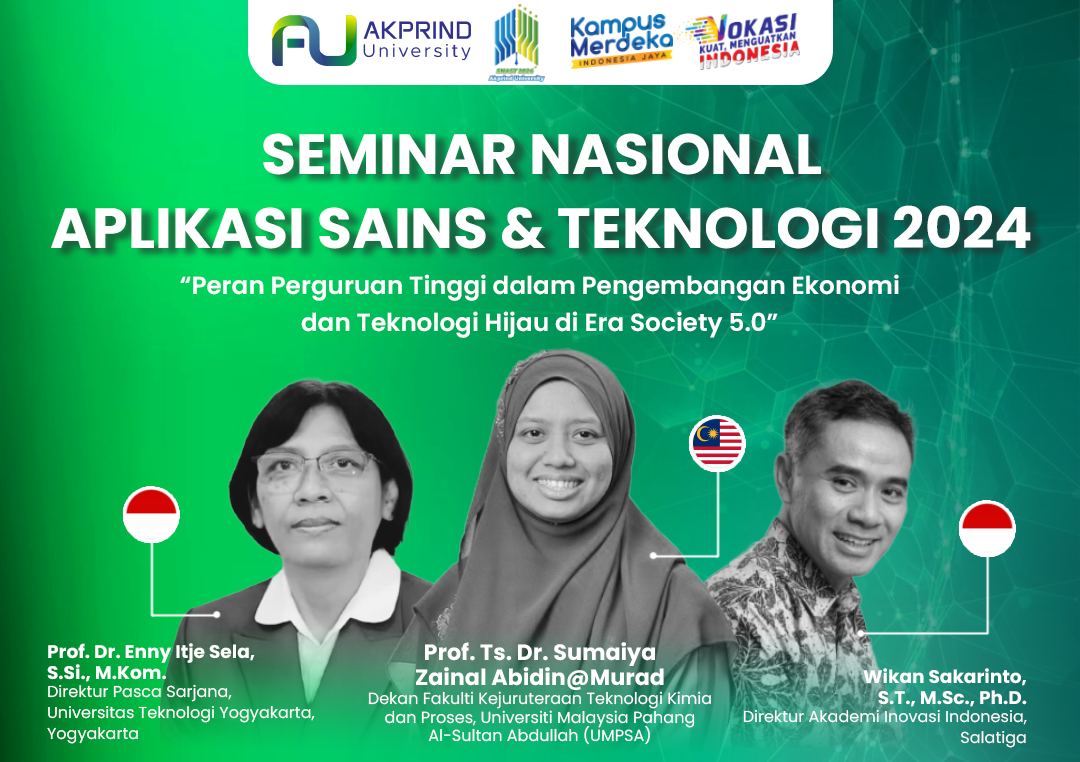EFEKTIVITAS METODE PDCA DALAM MENINGKATKAN AKURASI PENGUJIAN KOMPOSISI BENANG DI INDUSTRI PEMINTALAN
DOI:
https://doi.org/10.34151/prosidingsnast.v1i1.4910Keywords:
PDCA; yarn composition; polyester-cotton blend; quality control; textile manufacturingAbstract
This study investigates the effectiveness of the Plan-Do-Check-Act (PDCA) method in improving the accuracy of polyester-cotton blend yarn composition testing within the spinning industry. The PDCA methodology was applied to address current testing inaccuracies, focusing on achieving the industry-standard blend ratio of 65/35 polyester-cotton. Adjustments in procedural standards, including drying times, washing techniques, and oven temperatures, were made to align with AATCC guidelines. The results show a significant improvement in testing accuracy, reducing variability and ensuring consistency with work order specifications. This research demonstrates that the PDCA cycle enhances quality control processes and contributes to more reliable outcomes in textile manufacturing. Future work could explore integrating advanced technologies such as AI into the PDCA framework for further optimization.
References
Ahmmed, A. and Ayele, M. (2020). In-depth analysis and defect reduction for ethiopian cotton spinning industry based on tqm approach. Journal of Engineering, 2020, 1-8. https://doi.org/10.1155/2020/5792434
Amaral, M., Zonatti, W., Silva, K., Junior, D., Neto, J., & Baruque-Ramos, J. (2018). Industrial textile recycling and reuse in brazil: case study and considerations concerning the circular economy. Gestão & Produção, 25(3), 431-443. https://doi.org/10.1590/0104-530x3305
Bertocci, F., Grandoni, A., Fidanza, M., & Berni, R. (2021). A guideline for implementing a robust optimization of a complex multi-stage manufacturing process. Applied Sciences, 11(4), 1418. https://doi.org/10.3390/app11041418
Cai, Y., Cui, X., Rodgers, J., Thibodeaux, D., Martin, V., Watson, M., … & Pang, S. (2013). A comparative study of the effects of cotton fiber length parameters on modeling yarn properties. Textile Research Journal, 83(9), 961-970. https://doi.org/10.1177/0040517512468821
Camones-Caballero, V. (2024). Lean production model to reduce defects and achieve sustainability in a peruvian textile sme. Advances in Science and Technology. https://doi.org/10.4028/p-yein25
Chang, R., Lee, C., & Hung, Y. (2021). Cloud-based analytics module for predictive maintenance of the textile manufacturing process. Applied Sciences, 11(21), 9945. https://doi.org/10.3390/app11219945
Chen, H., Wang, P., & Qi, J. (2022). Analysis of the application effect of pdca cycle management combined with risk factor management nursing for reducing infection rate in operating room. Frontiers in Surgery, 9. https://doi.org/10.3389/fsurg.2022.837014
Chen, J. (2024). Enhancing the timeliness of emr documentation in resident doctors: the role of pdca cycle management.. https://doi.org/10.21203/rs.3.rs-3881618/v1
Chen, J., Cai, W., Lin, F., Chen, X., Chen, R., & Ruan, Z. (2022). Application of the pdca cycle for managing hyperglycemia in critically ill patients. Diabetes Therapy, 14(2), 293-301. https://doi.org/10.1007/s13300-022-01334-9
Ding, Z., Zhou, J., Du, G., Zhao, S., Furukawa, T., & Lu, K. (2022). A two-model automatic towel defect detection method based on yolov5. Proceedings of International Exchange and Innovation Conference on Engineering & Sciences (Ieices), 8, 386-393. https://doi.org/10.5109/5909122
Doran, E. and Şahin, C. (2019). The prediction of quality characteristics of cotton/elastane core yarn using artificial neural networks and support vector machines. Textile Research Journal, 90(13-14), 1558-1580. https://doi.org/10.1177/0040517519896761
Erdil, A. and Taçgın, E. (2018). Potential risks and their analysis of the apparel & textile industry in turkey: a quality-oriented sustainability approach. Fibres and Textiles in Eastern Europe, 26(6(132)), 30-42. https://doi.org/10.5604/01.3001.0012.2526
Gu, S., Zhang, A., Huo, G., Yuan, W., Li, Y., Han, J., … & Shen, N. (2021). Application of pdca cycle management for postgraduate medical students during the covid-19 pandemic. BMC Medical Education, 21(1). https://doi.org/10.1186/s12909-021-02740-6
Kalemulloev, M., Platov, A., & Silaeva, A. (2021). Integration of the controlling mechanism into the deming-shewhart pdсa cycle in the context of digitalization. SHS Web of Conferences, 106, 01036. https://doi.org/10.1051/shsconf/202110601036
Komal, S. and Saad, S. (2022). The role of total quality management in textile industry.. https://doi.org/10.3233/atde220592
Kong, X., Zhu, X., Zhang, Y., & Wu, J. (2021). The application of plan, do, check, act (pdca) quality management in reducing nosocomial infections in endoscopy rooms: it does work. International Journal of Clinical Practice, 75(8). https://doi.org/10.1111/ijcp.14351
Li, Y., Yang, D., Yang, C., Yang, S., & Liang, H. (2023). Analysis of the application effect of an emergency caesarean section rapid response team with pdca cycle management.. https://doi.org/10.21203/rs.3.rs-2861978/v1
Lian, B. (2024). Adoption of network and plan-do-check-action in the international classification of disease 10 coding. World Journal of Clinical Cases, 12(19), 3734-3743. https://doi.org/10.12998/wjcc.v12.i19.3734
Lv, L. (2023). Impact of pharmacist-led pdca cycle in reducing prescription abandonment: an action research from china. Patient Preference and Adherence, Volume 17, 2145-2152. https://doi.org/10.2147/ppa.s418219
Manik, E., Sidharta, I., Coenraad, D., Komara, A., Satria, R., & Riadi, F. (2023). Assessing total quality management and its impact on product quality: a cross-sectional study on textile industries in bandung, indonesia. International Journal of Applied Economics Finance and Accounting, 15(2), 71-79. https://doi.org/10.33094/ijaefa.v15i2.820
Muhammad, A. (2023). Boosting customer satisfaction and unleashing inventory mastery through the dynamic pdca cycle at a trendsetting outlet in malaysia: a case study of pks fashion outlet. Information Management and Business Review, 15(3(I)), 41-49. https://doi.org/10.22610/imbr.v15i3(i).3515
Murata, K. (2023). Workshop for learning visual management in japan: a report.. https://doi.org/10.24928/2023/0118
Oliveira, R., Souza, C., Reis, A., & Souza, W. (2021). Gamification in e-learning and sustainability: a theoretical framework. Sustainability, 13(21), 11945.
Penelitian Aplikasi Siklus PDCA dalam Meningkatkan Tingkat Penggunaan Karet Dam pada Terapi Saluran Akar, 2023. Academic Journal of Medicine & Health Sciences, 4(7). https://doi.org/10.25236/ajmhs.2023.040702
Rangel-Sánchez, M. (2024). Enhancing scrap reduction in electric motor manufacturing for the automotive industry: a case study using the pdca (plan–do–check–act) approach. Applied Sciences, 14(7), 2999. https://doi.org/10.3390/app14072999
Realyvásquez-Vargas, A., Arredondo-Soto, K., Carrillo, T., & Ravelo, G. (2018). Applying the pdca cycle to reduce the defects in the manufacturing industry. a case study.. https://doi.org/10.20944/preprints201810.0347.v1
Sumasto, F. (2023). Pdca method implementation to reduce the potential product defects in the automotive components industry. Ijiem - Indonesian Journal of Industrial Engineering and Management, 4(2), 87. https://doi.org/10.22441/ijiem.v4i2.19527
Sun, J., Cao, W., Song, Y., & Yuan, C. (2021). Plan, do, check, act (pdca) cycle nursing model reduces the risk of hemangioma in hemodialysis patients. Iranian Journal of Public Health. https://doi.org/10.18502/ijph.v50i12.7939
Taufik, D. (2020). Pdca cycle method implementation in industries: a systematic literature review. Ijiem - Indonesian Journal of Industrial Engineering and Management, 1(3), 157. https://doi.org/10.22441/ijiem.v1i3.10244
Taylor, M., McNicholas, C., Nicolay, C., Darzi, A., Bell, D., & Reed, J. (2013). Systematic review of the application of the plan–do–study–act method to improve quality in healthcare. BMJ Quality & Safety, 23(4), 290-298. https://doi.org/10.1136/bmjqs-2013-001862
Taylor, M., McNicholas, C., Nicolay, C., Darzi, A., Bell, D., & Reed, J. (2013). Systematic review of the application of the plan–do–study–act method to improve quality in healthcare. BMJ Quality & Safety, 23(4), 290-298. https://doi.org/10.1136/bmjqs-2013-001862
Torres, M., Izquierdo, M., Ferrero-Ferrero, I., Escrig-Olmedo, E., & Rivera-Lirio, J. (2022). Social life cycle analysis of textile industry impacts for greater social sustainability of global supply chains. Systems, 11(1), 8. https://doi.org/10.3390/systems11010008
Zimon, D. and Domingues, P. (2018). The proposal concept of improving the sustainable management of supply chains in the textile industry. Fibers and Textiles in Eastern Europe, 26(2(128)), 8-12. https://doi.org/10.5604/01.3001.0011.5732
Downloads
Published
Issue
Section
License
Copyright (c) 2024 Ahmad Darmawi

This work is licensed under a Creative Commons Attribution-ShareAlike 4.0 International License.







